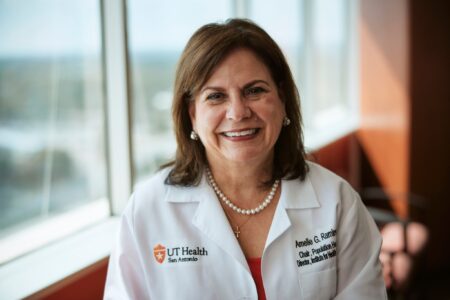Share On Social!
Cancer screening can help catch cancer early when it is more treatable. But participation in screening is sporadic at best, especially among Latinos.
What would happen if more people got screened for cancer?
To find out, a team of U.S. and Canadian researchers used computer modeling to estimate the number of deaths that could be prevented, and the harms caused, if more people followed recommended cancer screening guidelines.
Let’s explore what they found and what it means for Latino cancer.
The Impact of More Screening: Potential Lives Saved
Cancer screenings can catch early cases of lung, colorectal, cervical, and breast cancers.
But only 13% of people eligible are up to date for lung cancer screening; 69% for colorectal cancer screening; 73% for cervical cancer screening; and 76% for breast cancer screening.
In the new study, published in JAMA Network, the researchers examine at a 10-percentage-point increase in the uptake of recommended cancer screening among eligible US residents.
“We opted to evaluate the impact of a 10–percentage point increase in uptake so that the magnitude of the increase was the same across all cancer screening tests, regardless of the baseline level of screening for that cancer,” said the study lead, Dr. Amy Knudsen.
This boost in screening could prevent:
- 1,010 deaths from lung cancer (among 454,000 people eligible for screening in 2021)
- 11,070 deaths from colorectal cancer (among 3.91 million eligible)
- 1,790 deaths from breast cancer (among 2.18 million eligible)
- 1,710 deaths from cervical cancer (among 2.13 million eligible)
“The increased uptake of recommended screening strategies would help to reduce the burden of cancer in the United States,” Knudsen said.
The Impact of More Screening: Potential Harm
While increase of screenings can be beneficial, the new study also found how increases in screenings can have negative consequences:
More screening could generate:
- 100,000 false–positive lung scans
- 6,000 colonoscopy complications (e.g., bleeding)
- 300,000 false–positive mammograms
- 348,000 cervical biopsies over the lifetimes of those individuals
“Decision makers, whether they be individuals and their doctors or health care systems, must consider whether the benefits of any screening test outweigh the risks,” Knudsen said. “This is particularly important for newer tests that have not yet been subject to rigorous evaluation.”
The State of Cancer Screening among Latinos
Latinos often have lower cancer screening rates than their peers, despite high rates of certain cancer types and/or worse outcomes among others.

The reasons for this are complex.
Lower screening rates can be tied to access to healthcare and being uninsured or underinsured. Other important elements are the non-medical issues that impact our health – such as access to healthy food, transportation, income.
“Additionally, not all clinicians are aware of current screening recommendations and, even if they are aware, some are not recommending screening to their patients,” Dr. Knudsen said. See the current screening recommendations. “We hope that our work makes the case that additional efforts to increase screening rates would result in fewer cancer deaths.”
Dr. Amelie G. Ramirez, director of Salud America! at UT Health San Antonio, uplifted strategies to boost screening among Latinos.
Check out Ramirez’s webinar on screening for Latinas and webinar on screening for Latino men.
Still, screening alone won’t be enough to meet the Biden Administration’s goal of reducing cancer deaths by 50% in 25 years, Knudsen said.
“Targeted efforts to increase screening test uptake among individuals at high risk of cancer death will be needed, along with advances in prevention and treatment,” Knudsen said.
How Can Clinical Trials Help?
How can you find open clinical trials to participate in?
Look to Salud America!’s clinical trial page to find a research opportunity or learn from role models who have participated in a trial.
“Volunteers who participate in clinical trials have the potential to help themselves, and contribute to the development of new treatments for people in the future,” said Dr. Amelie Ramirez, director of Salud America! and the Institute of Health Promote Research at UT Health San Antonio.
Those looking for opportunities based in San Antonio can search the Mays Cancer Center at UT Health San Antonio’s Find a Clinical Trial database to learn more about available clinical trials and eligibility requirements.
On a national level, visit clinicaltrials.gov to find a clinical trial near you.
By The Numbers
142
Percent
Expected rise in Latino cancer cases in coming years



